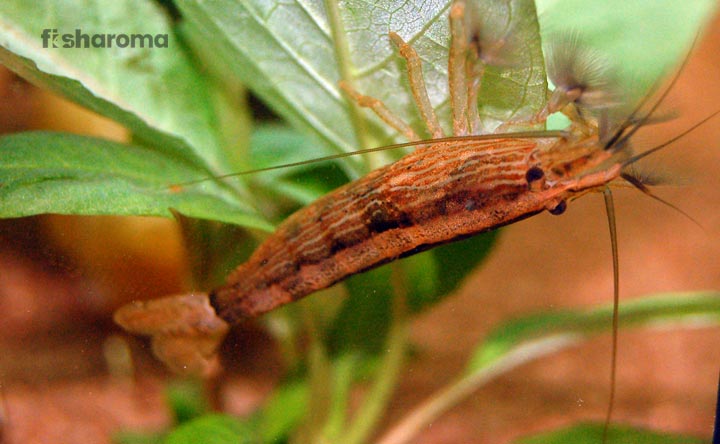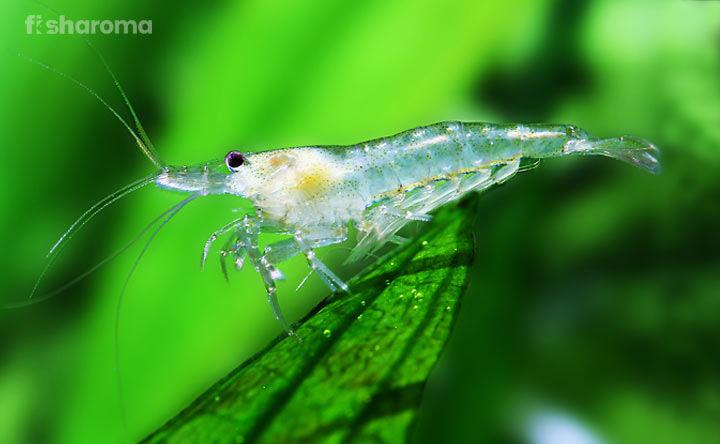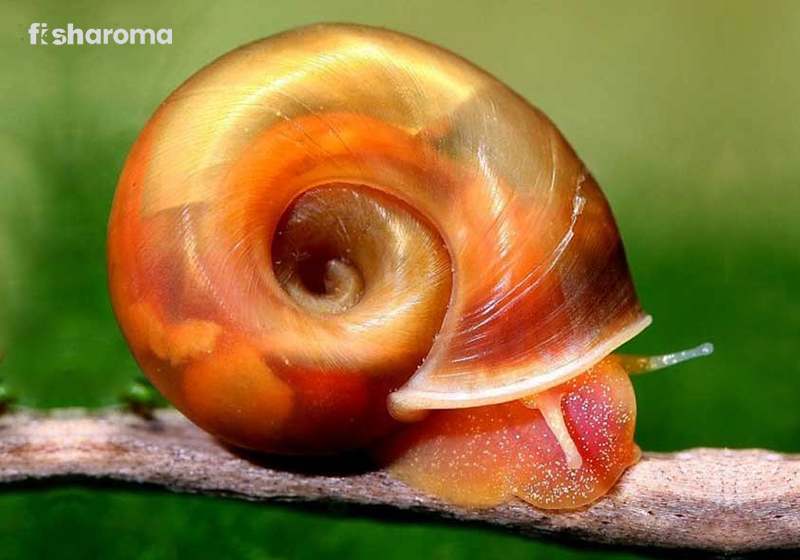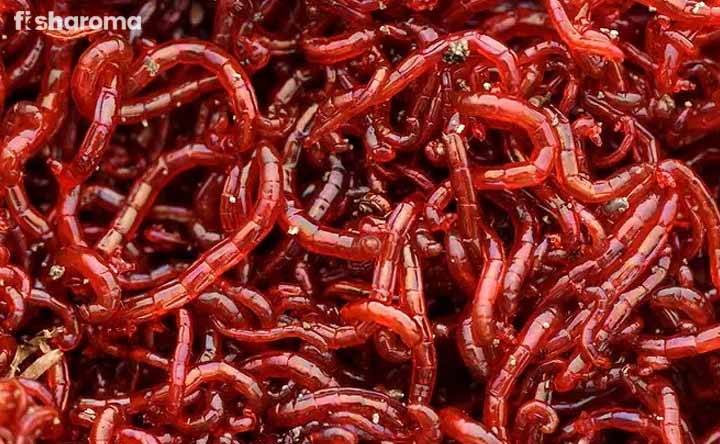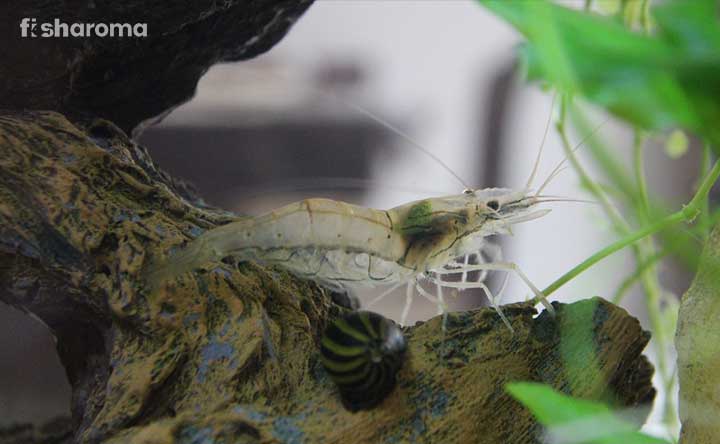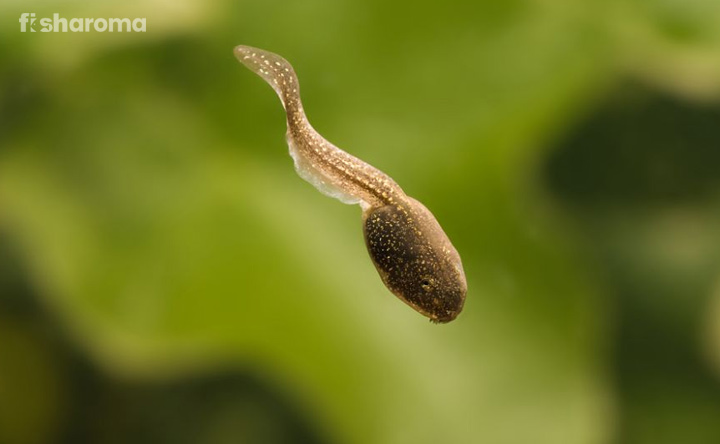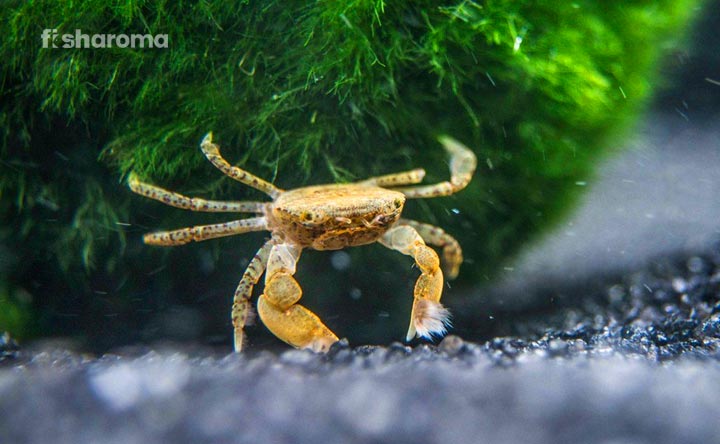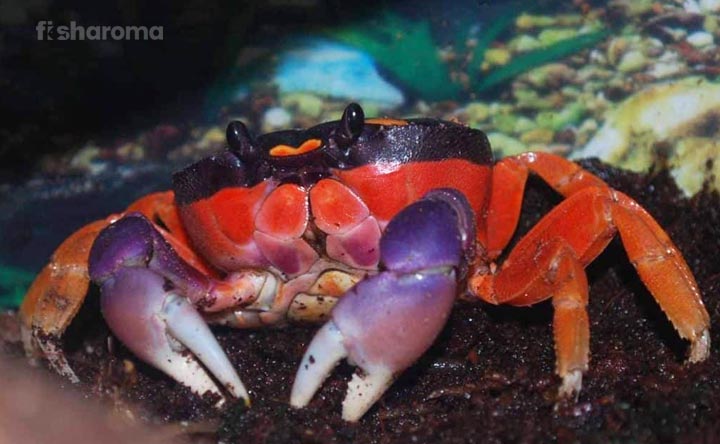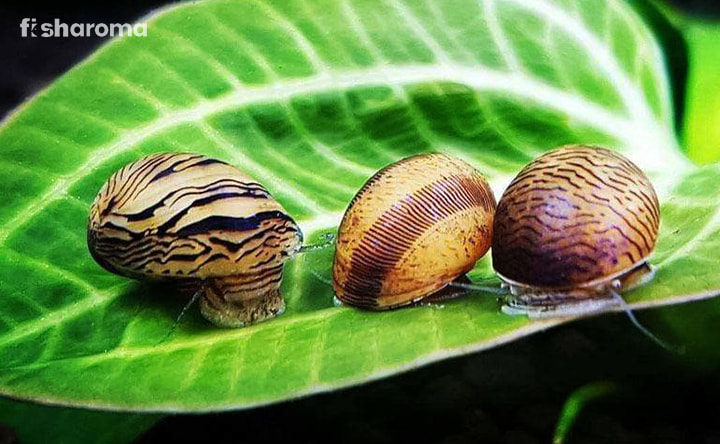Cherry Shrimp – The Complete Care Guide for Non-Fish Pet Lovers
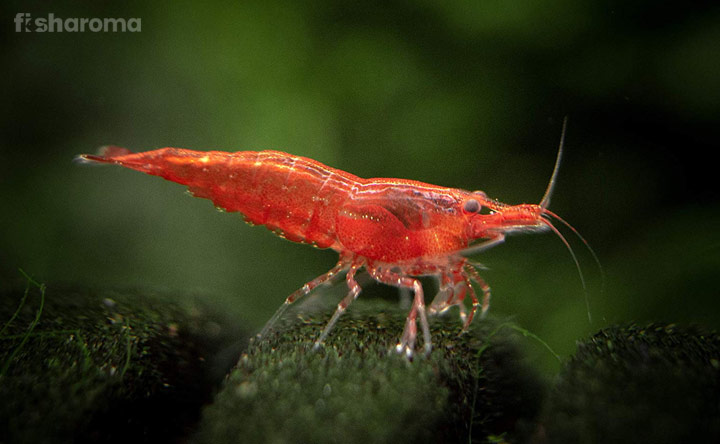
- Origin of Cherry Shrimp
- Cherry Shrimp Appearance
- Types of Cherry Shrimps
- Temperament of Cherry Shrimp
- Suitable Tankmates for Cherry Shrimp
- Diet Plan for Cherry Shrimp
- Tank Requirements for Cherry Shrimp
- Water Type for Cherry Shrimp
- Breeding Process of Cherry Shrimp
- Diseases of Cherry Shrimp with Interventions
Don’t be astonished by hearing the name ‘Cherry Shrimp’ because there are many aquarists who like to bring a variety in their aquarium by keeping invertebrates or crustaceans like snails and shrimps.
Long we have studied and discussed the care guide of freshwater and saltwater fish breeds. Now, let us know about the care guide of a freshwater non-fish pet or a beautiful invertebrate like this shrimp.
Invertebrates are usually considered as fish foods, so if you are planning to keep a Cherry Shrimp or other crustaceans in your tank then never keep any omnivoros or carnivoros fish with it which may harm or eat your non-fish friend.
Quick Details on Cherry Shrimp
The calm nature of this shrimp is often admired by hobbyists. Moreover, the color vibrancy of this shrimp also attracts fish enthusiasts to keep this invertebrate in their tank. Let us look at a short detail onthis shrimp in the table given below:
| Scientific Name | Neocaridina davidi |
| Origin | Taiwan |
| Life-Span | 1.2 years |
| Colors | Red, Orange, Violet, Brown, Blue, Green, Yellow and Black |
| Temperament | Peaceful |
| Size | 1.5” (3.81 cm) |
| Diet | Omnivore |
| Family | Atyidae |
| Compatibility | Other Crustaceans like Shrimps and Snails |
| Tank Size | 5 gallons |
| Care Level | Easy |
Overview
Cherry Shrimp is also known as Red Cherry Shrimp because of the dark-red color of this freshwater invertebrate. Fish enthusiasts also like keeping this shrimp in their aquarium because of its algae-eating nature. This shrimp consumes algae and decayed leaves in the aquarium. Hence, it is known as a tank-cleaning aquatic animal.
Appropriate for the tank of both beginner and experienced aquarists, This shrimp is the hardiest and adaptable shrimp for freshwater aquarium. It is suggested to keep some hiding places in the tank for the comfort of the fish.
Cherry Shrimps occasionally shed their skin or exoskeleton. When they do this process, the body turns in a ‘U’ shape because they try to touch their tail in order to molt. The molting process of this species takes place very fast and the old skin is shaded after that.
Origin of Cherry Shrimp
Native to the rivers and streams near Taiwan, Cherry Shrimp can be found swimming with a school of other crustaceans in the deep and mid-level of the rivers, lakes, and streams. Generally, it dwells in cold tropical water, so check the temperature of water while setting a tank for this invertebrate.
Cherry Shrimp Appearance
The shinning dark shade of Cherry Shrimp is quite attractive. It can grow up to 1.5” (3.81 cm) and sometimes more than that. The grading of the Shrimp can be changed from the dark to pale shades with red and black spots on its body. It has antennae on its head that help it detect its food and fight with its enemies.
The eyes of this shrimp are bright black-shaded. Not only red and brown but you will also get other colors of Cherry Shrimp such as green, orange, black, violet, and blue. The females are taller and bright-shaded in comparison to male shrimps. The female shrimps grow a saddle-looking container on the top-most part of their stomach where eggs are stored and fertilized during breeding.
Types of Cherry Shrimps
Some of these shrimps are popularly known and kept in an aquarium of aqua-life loving hobbyists who like petting the invertebrates. Have a look at the different types of Cherry Shrimps which have the same shape and size but their colors are different from one another:
- Fire Red Cherry Shrimp: This shrimp is bright red-orange shaded like the color of the fire.
- Sakura Cherry Shrimp: This shrimp is a dark red shrimp that has clear patches on its body. The legs of this fish are translucently shaded.
- Painted Fire Red Cherry Shrimp: This shrimp is the most expensive crustacean. The body of this fish is solid red in color with no transparent shades. The legs of this shrimp are longer than other shrimps.
- Bloody Mary Red Cherry Shrimp: This shrimp is blood-red in color and its antennae are longer than other shrimps.
Temperament of Cherry Shrimp
The non-aggressive and peaceful behavior of this shrimp has made it suitable for every type of aquarium. This shrimp is not very active, and you will find them spending large periods of the day grazing on the things of aquarium such as live plants, rocks, substrate, moss, and caves.
Usually, this shrimp is only active in finding foods at day and night. The females are active only at night and they love hiding in dark places.
Suitable Tankmates for Cherry Shrimp
Cherry Shrimp is a peaceful invertebrate, so it avoids conflict and overcrowded place. If you are petting this shrimp then try to keep it with calm-natured crustaceans and herbivoros fish which will never harm or eat up this shrimp.
This invertebrate cannot fight to save itself from predators, and it turns as the prey of large and aggressive fish and other non-fish pets. Therefore, try to find out suitable tankmates for your pet Cherry Shrimp. Some of the best companions for this shrimp are:
- Freshwater Snails (Gold Inca, Mystery Snail, Ivory, Malaysian Trumpet, Nerite Snail)
- Freshwater Shrimps (Blue Tiger Shrimp, Ghost Shrimp, Crystal Black Shrimp, Panda Shrimp, Amano Shrimp, Cardinal Shrimp)
- Dwarf Gourami Fish
- Pygmy Cory Catfish
- Small Tetra Fish
- Surgeon Fish
Unsuitable Tankmates
Never keep meat-eating fish and invertebrates who can eat up the Cherry Shrimp. Some unsuitable tankmates for this shrimp are:
- Oscars
- Discus
- Cichlids
- Arowanas
- Crabs
Compatibility of Cherry Shrimp
If you are keeping Cherry Shrimp together then about ten of them are enough for an aquarium. If you keep more than ten of these shrimps together in a tank then arrange a spacious tank for them because plenty of hiding places are also needed for this shrimp.
These shrimps are perfect to breed. In terms of male and female ratio, ensure that the number of females should be more than the males, otherwise the males can disturb the female.
Diet Plan for Cherry Shrimp
Cherry Shrimp is a scavenger and an omnivorous crustacean, so it can eat both plants and meat matter. It is not a fussy eater. Feed them twice or thrice a day in small amounts because overfeeding may fill the tank with toxins. You can feed them foods like:
- Lettuce Leaves
- Carrots Spinach Juice
- Cucumber Crumbs
- Zucchini
- Algae
- Small Insects
- Worms
- Dead and Live Plants
You can also feed them dried foods or pellets like:
- Shrimp King Complete
- Zoo Med Nano Banquet Block Mini 6/cd
Tank Requirements for Cherry Shrimps
Cherry Shrimp is usually found in the ponds and rivers surrounded by rocky substrate and densely-packed plants. Try to emulate the natural condition in the shrimp tank, so that it feels comfortable. Hiding crevices, driftwood, and moss are some of the necessary things to be kept in its tank for its need.
Moss is necessary so that the shrimp can hide and take rest on it, and driftwoods are necessary so that the shrimps can nipple algae from it. There are some other essential things that are needed for the aquarium of Cherry Shrimp such as:
Tank Size
You can keep 2-3 Cherry Shrimps in a 5-gallon aquarium. However, if you are keeping more species in the same the same tank then buy a 10-gallon aquarium.
Ornament
Adorn the tank of your pet shrimp with a fine rocky substrate, driftwood, peat moss and green plants like Java Moss and Anacharis because this shrimp likes to dwell in a natural eco-friendly environment.
Lighting
A high to moderate light setting should be done in the aquarium of this shrimp.
Filter
If you want to oxygenate the water, air stone is a perfect filtration for your aquarium. You can also keep many green plants which can act as natural filtration for your tank. An automated filtration system in the tank may also help flush out the toxins and contaminants of the shrimps with the help of filter pipe.
Water Type for Cherry Shrimps
Learn the ideal water condition of the tank of Cherry Shrimp because water is its only home. Take a look at some important things that are necessary to set the tank of this shrimp:
Temperature
It is always important to check the temperature of the water for the tank of Cherry Shrimp. The ideal temperature of the tank water of this non-fish pet should be 65-85°F (18.33-29.44°C).
pH Level
The pH level of the water of its tank should be 6.5-8.0.
Cleaning Method
Use aerated water, mild liquid soap, and a soft brush to clean the walls, corners, and objects of the aquarium. After the scrubbing and washing process, wipe the walls with a cotton cloth.
Cherry Shrimp is a tank cleaner and algae eater, so you won’t need special effort to clean its tank because it can self-clean its tank by eating the contaminants like decayed leaves and algae.
Replacement Process
Cherry Shrimp excretes waste and toxins in the water of the tank, so it is necessary to change about 15% of the water every week and 25% of water every month to maintain the water quality, the main part of aquatic world.
Breeding Process of Cherry Shrimps
Cherry Shrimps have no mating season, so they can mate and spawn at every season they wish. The reproduction rate of these shrimps is largest among every shrimps. The female fish develops its eggs in its ovary that is yellow in color and triangular in shape.
The female shrimps release pheromones to signal their mating partner. After the mating process, the females attach their eggs to their swimmerets to carry the eggs until they hatch. The shrimps also circulate the water over their eggs with their legs for ensuring the good health of their offspring.
The eggs become dark in color after three weeks, and the newborn shrimp is about 1 mm long. The baby shrimps can be fed leaves juices and kept in the caves of the aquarium. When they grow adult, they start eating algae and wastes of the aquarium.
Cherry Shrimps get sexually mature at the age of 4-6 months.
Diseases of Cherry Shrimp with Interventions
Although Cherry Shrimp is hardy in nature, it is prone to some diseases due the immunity problem, overfeeding, dirty tank and parasite infections. Some of the diseases of this shrimp are:
- Bacterial Infection
- Fungal Diseases
- Columnaris
- Black Spot Disease
- Muscle Necrosis
- Stomach Infection
- Parasitic Infection (Cladogonium Ogishimae, Hydra, Planaria, Vorticella and Scutariella Japonica)
As we know that Cherry Shrimp is a scavenger and it consumes the waste elements in tank, so try to keep the tank clean because this shrimp is sensitive to ammonia spike, so ensure the water parameter should be stable as per aforesaid temperature.
Most of the medicines have copper ingredients but Cherry Shrimps are highly sensitive with copper. So, check the label of the medicine pack where the ingredients of medicines are written or ask a veterinary doctor before you purchase any medicine for your pet shrimp.
Interesting Facts about Cherry Shrimp
- Cherry Shrimp consumes its exoskeleton which it sheds just to restock the essential minerals whenever required.
- This shrimp molts once a week because it is a very important process for this invertebrate.
- They are one of the best swimmers at night.
- These shrimps sometimes make snapping sound while eating their foods.
Know about More Invertebrates for Your Aquarium
Along with Cherry Shrimp, there are other crustaceans that you can add in your beautiful pet aquatic world. However, learn the care guide of some species before you start petting them.
- Amano Shrimp: Like Cherry Shrimp, many people love keeping the bright-green shaded Amano Shrimp in their aquarium. If you are one of them then know the complete care guide about this invertebrate by reading the full article.
- Assassin Snail: Snails are very peaceful species that are often kept in the fish tank. The shells of these snails are so attractive that fishkeepers like petting this crustacean in their tank to ornament the fish home. To know its care guide, you need to read the entire article.

